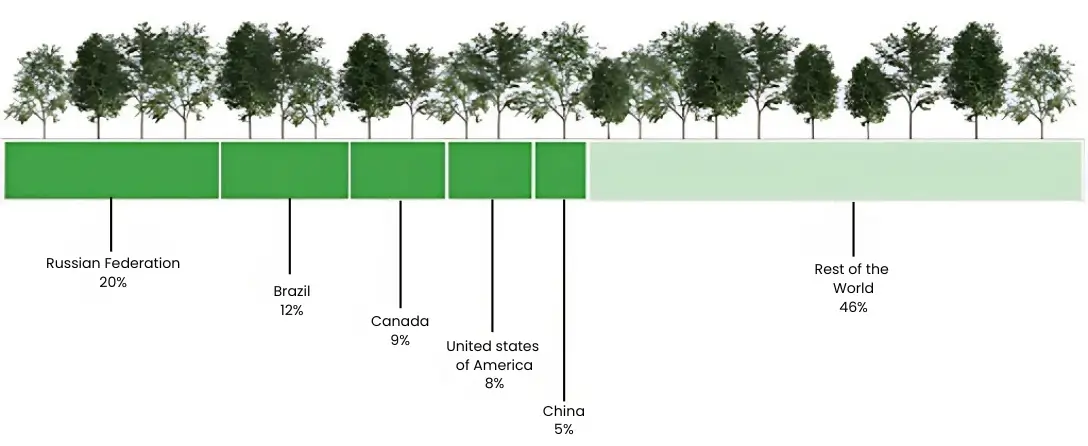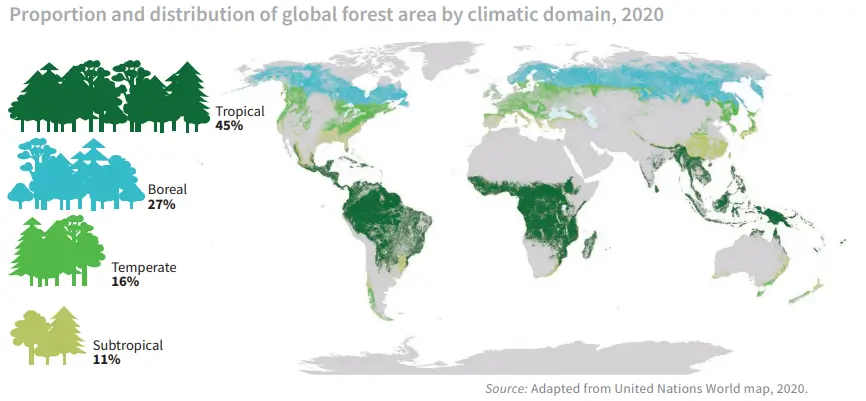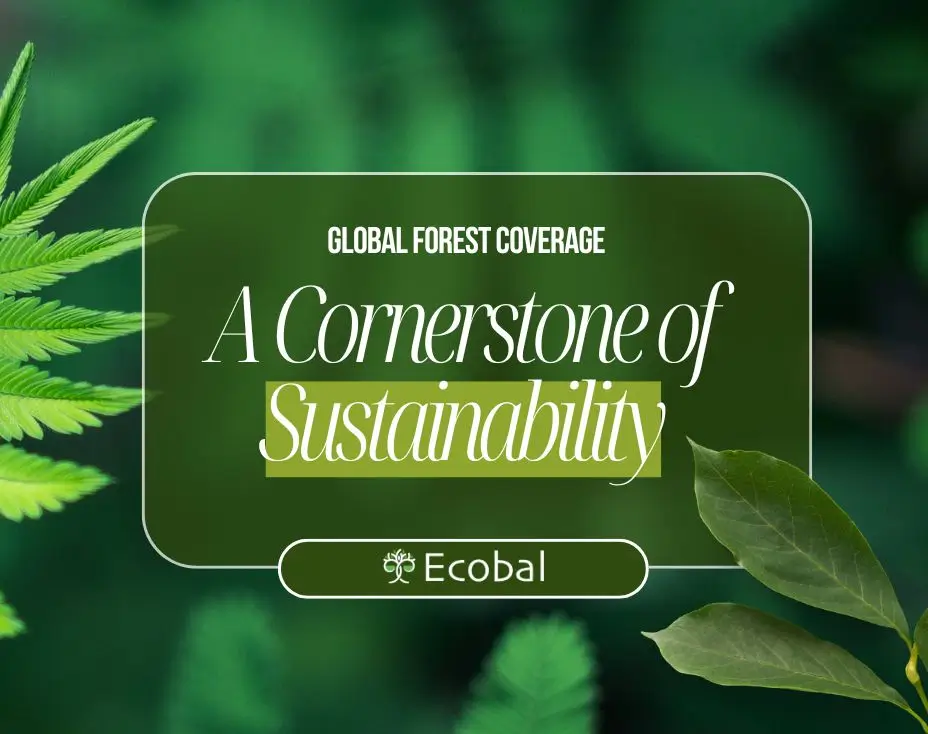Global Forest Coverage
Global forest coverage is a critical indicator of environmental health and sustainability. As of 2020, the total forest area worldwide is approximately 4.06 billion hectares, which accounts for about 31% of the Earth’s total land area. This translates to roughly 0.52 hectares of forest per person on the planet. The distribution of forested areas is uneven across the globe, with the largest shares found in a few key countries. Russia alone contains about 20% of the world’s forests, followed by Brazil at 13%, Canada at 9%, the United States at 7%, and China at 5% (FAO, 2020). Collectively, these five countries host nearly 54% of the global forest area, emphasizing the importance of national policies in managing these vital resources.

Forest Types and Their Ecological Significance
Forests are classified into several types based on climatic conditions, with the most common categories being boreal, temperate, tropical, and subtropical forests. Boreal forests cover approximately 27% of global forest area, while tropical forests account for about 45%. Temperate forests make up around 16%, and subtropical forests constitute about 11% (FAO, 2020).
The ecological significance of these forests cannot be overstated; they provide essential ecosystem services such as carbon sequestration, biodiversity conservation, soil protection, and water regulation. For instance, forests are estimated to store about 289 gigatonnes of carbon in their biomass alone, playing a crucial role in mitigating climate change (IPCC, 2019). Additionally, they support approximately 80% of terrestrial biodiversity, offering habitat to countless species and maintaining ecological balance.

Global Forest Trends
Despite their importance, global forest coverage has been declining. Since 1990, the world has lost approximately 178 million hectares of forest—an area roughly equivalent to the size of Libya. However, it is noteworthy that the rate of deforestation has slowed in recent years due to improved management practices and reforestation efforts in certain regions.
For example, Asia has seen a net gain in forest area from 2010 to 2020 due to successful afforestation initiatives. Conversely, Africa experienced the highest annual rate of net forest loss during this period at approximately 3.9 million hectares, primarily driven by agricultural expansion and logging activities. However, the rate of net forest loss decreased substantially over the period due to a reduction in deforestation in some countries, plus increases in forest area in others through afforestation and the natural expansion of forests. The rate of net forest loss declined from 7.8 million ha per year in the decade 1990–2000 to 5.2 million ha in 2000–2010 and 4.7 million ha per year in 2010–2020 (FAO, 2020).
Forest Ownership and Protection
The current status of forests also reveals significant disparities in ownership and protection. Approximately 73% of the world’s forests are under public ownership, while 22% are privately owned. Furthermore, an estimated 726 million hectares of forest are designated as protected areas globally. Protected areas are crucial for conserving biodiversity and maintaining ecosystem services.
Conclusion
Global forest coverage is a vital component of ecological health and sustainability. With approximately 4.06 billion hectares of forest worldwide encompassing various types that provide essential ecosystem services, forests play a crucial role in addressing climate change and supporting biodiversity. While there have been positive trends in certain regions regarding reforestation and afforestation efforts, significant challenges remain due to ongoing deforestation and land-use change. Ensuring sustainable management practices and enhancing protected areas will be essential for preserving these critical resources for future generations.
Why It Matters for Ecobal
At Ecobal, we are committed to staying at the forefront of technological advancements in CO2 sequestration. By integrating cutting-edge technologies such as ultra-fast CO2 hydrate formation, we enhance our efforts to transform former agricultural or barren lands into thriving ecosystems. Ecobal has achieved significant milestones, including:
- Nature Spots: Established in five different EU countries: France, Italy, Poland, Spain, and Romania.
- Storage Capacity: Managing 155 hectares of Nature Spots across the EU, storing 1,581 tons of CO2 and releasing about 1,150 tons of oxygen per year.
These efforts ensure that our projects not only effectively sequester CO2 but also contribute to sustainable biodiversity conservation.
Ecobal’s Mission
- Raise awareness and establish authority to certify the ecological health and capacity of rural and natural landscapes.
- Monetize ecosystem services to demonstrate the economic value of nature.
- Use natural ecosystems as efficient carbon sinks for CH4 and CO2 sequestration and biodiversity conservation.
- Turn CO2 and CH4 from a challenge into valuable and tradable commodities.
- Manage soil microbiota and fauna to improve soil health and ecosystem functionality.
- Restore biodiversity through the reintroduction and conservation of native species.
About the Author
This article is written by Ecobal’s Environmental Specialist, dedicated to advancing sustainable resource management and forest conservation through innovative technologies and research.
Selected sources:
- FAO (2020). Global Forest Resources Assessment 2020.
- IPCC (2019). Climate Change and Land: An IPCC Special Report.


